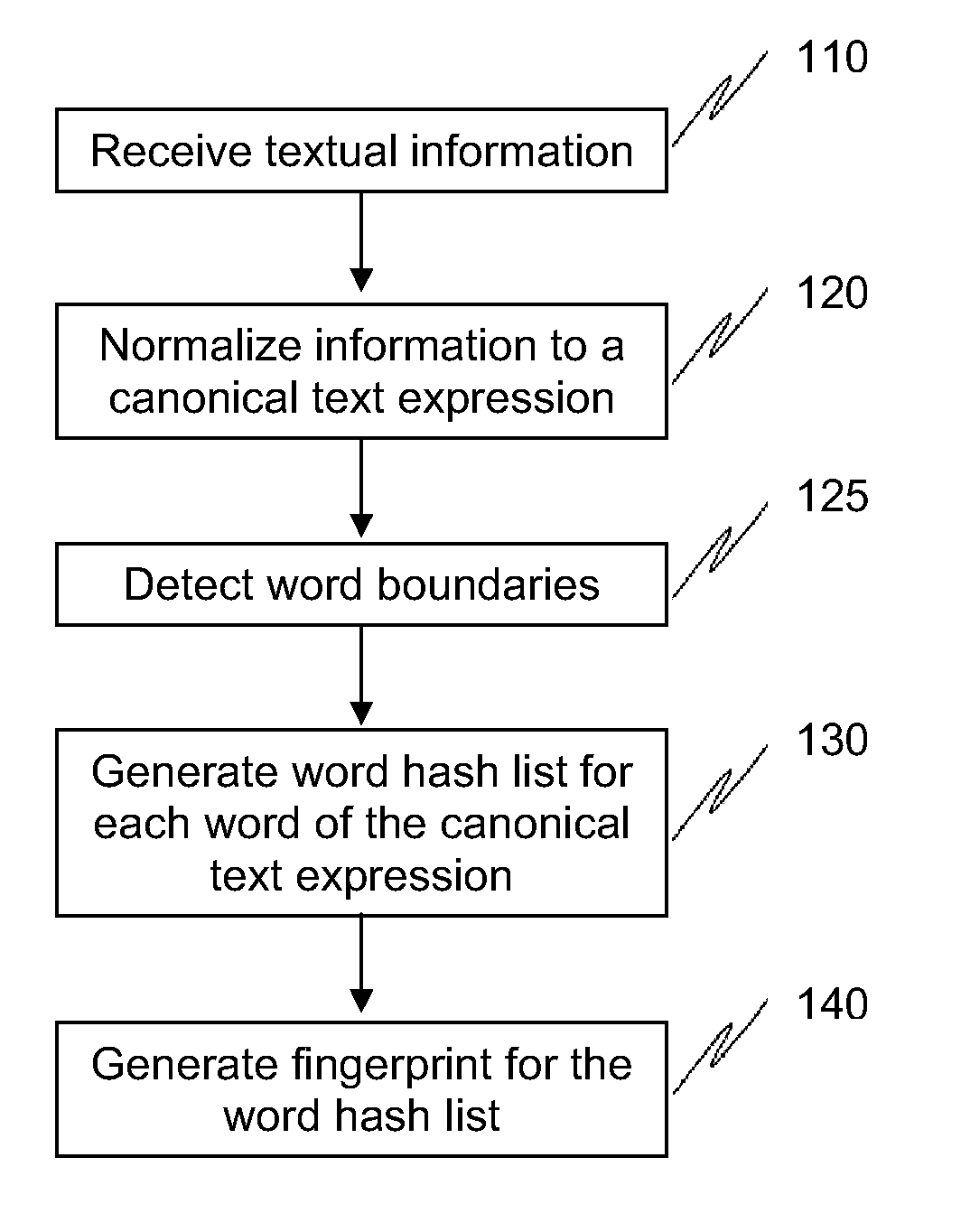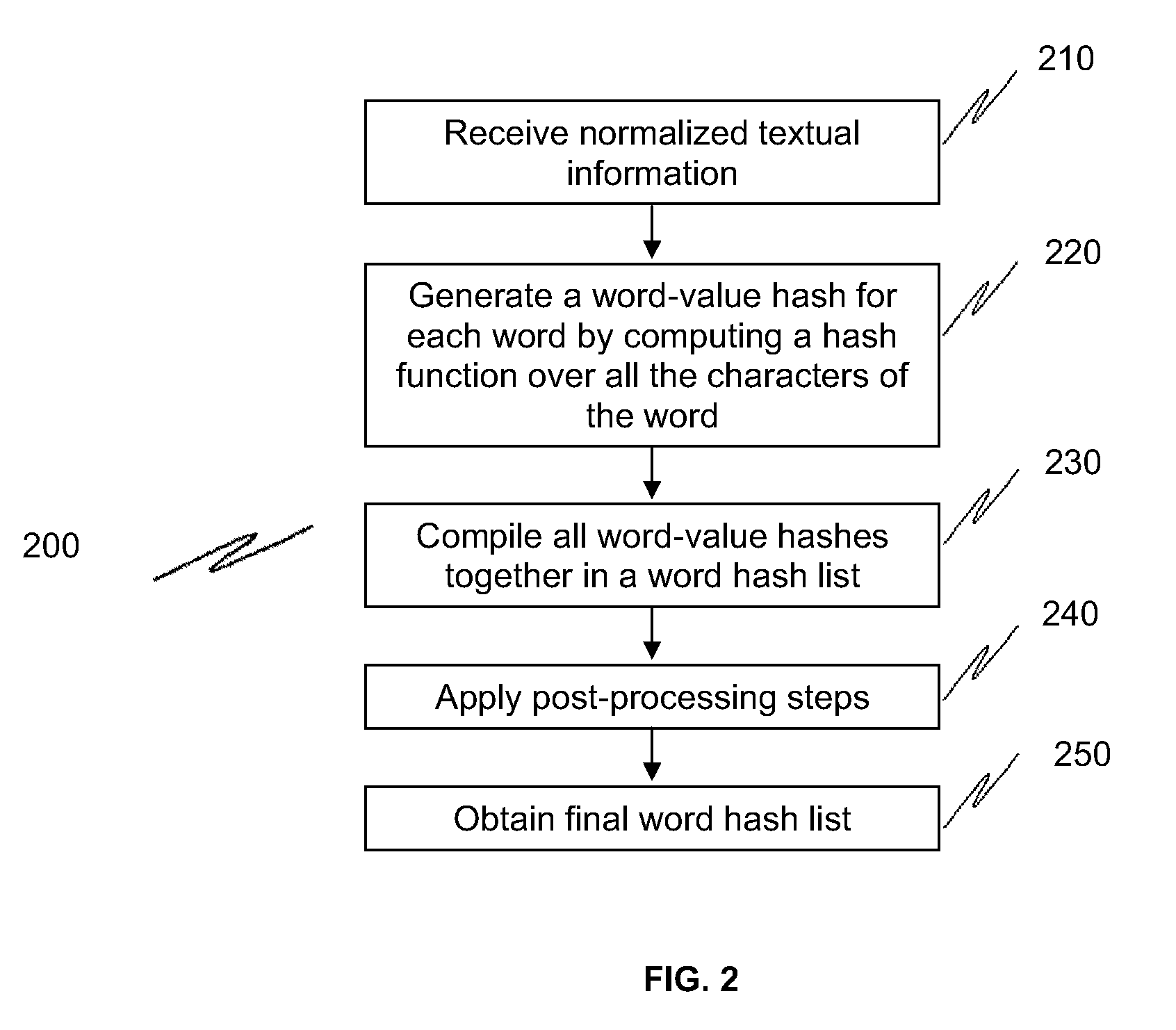Methods and systems to fingerprint textual information using word runs
a textual information and fingerprinting technology, applied in the field of information security, can solve the problems of evading a detection method, prior art approaches suffer, and organizations are exposed to serious security risks, so as to improve memory and resource efficiency, improve efficiency, and fingerprint fast and efficient
- Summary
- Abstract
- Description
- Claims
- Application Information
AI Technical Summary
Benefits of technology
Problems solved by technology
Method used
Image
Examples
Embodiment Construction
[0020]The present invention may be embodied in several forms and manners. The description provided below and the drawings show exemplary embodiments of the invention. Those of skill in the art will appreciate that the invention may be embodied in other forms and manners not shown below. It is understood that the use of relational terms, if any, such as first, second, top and bottom, and the like are used solely for distinguishing one entity or action from another, without necessarily requiring or implying any such actual relationship or order between such entities or actions.
[0021]FIG. 1 shows one embodiment of an overall method to fingerprint textual information using word runs. In this embodiment, the information that needs to be fingerprinted is received from a plurality of sources 110. This information is then normalized 120 to a standardized or canonical text format. The boundaries of each word are then detected 125 in a language independent manner. The words from the normalize...
PUM
 Login to View More
Login to View More Abstract
Description
Claims
Application Information
 Login to View More
Login to View More - R&D
- Intellectual Property
- Life Sciences
- Materials
- Tech Scout
- Unparalleled Data Quality
- Higher Quality Content
- 60% Fewer Hallucinations
Browse by: Latest US Patents, China's latest patents, Technical Efficacy Thesaurus, Application Domain, Technology Topic, Popular Technical Reports.
© 2025 PatSnap. All rights reserved.Legal|Privacy policy|Modern Slavery Act Transparency Statement|Sitemap|About US| Contact US: help@patsnap.com



